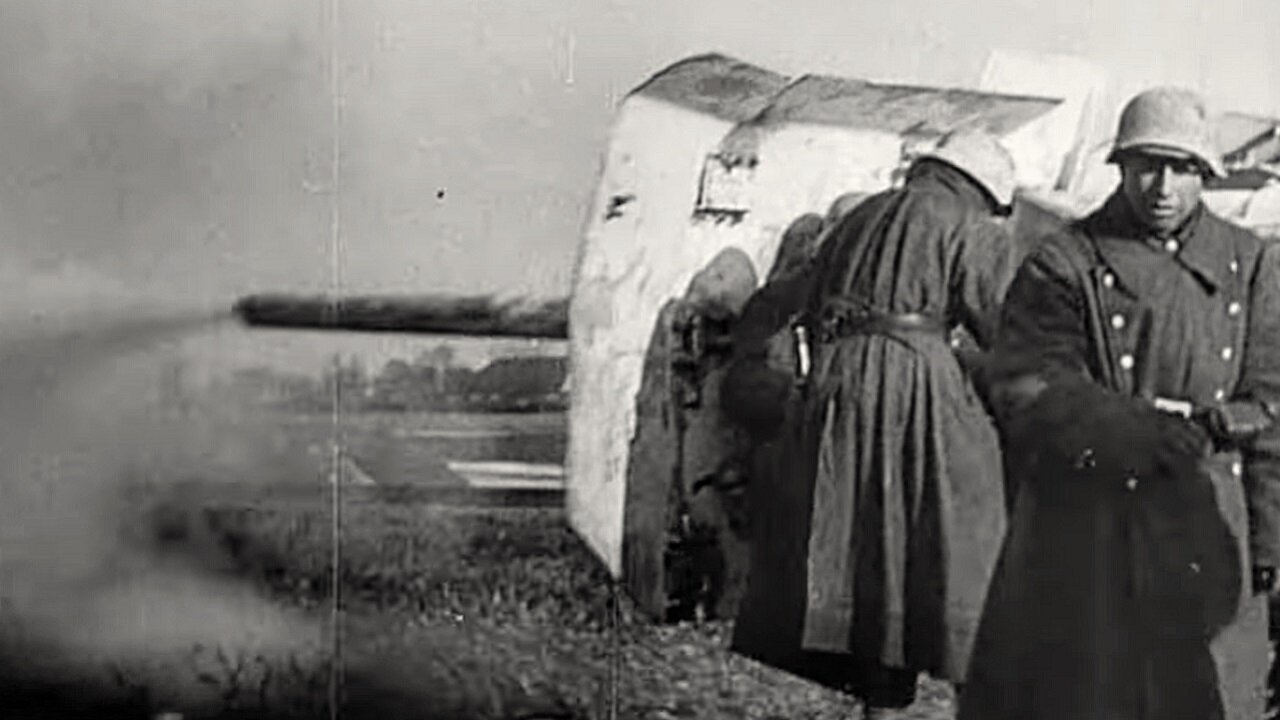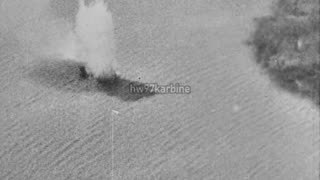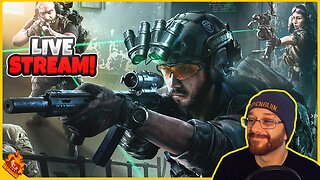Premium Only Content

Rare Flak 41 and Panther tanks engage a Soviet armored thrust during the Vistula-Oder Offensive
0:02 Sd.Kfz. 251/21 Schützenpanzerwagen (Drilling MG151s).
This variant of the Sd.Kfz. 251 half track was fitted with MG 151 aircraft cannon in either 15 or 20mm caliber as a light anti-aircraft weapon that was also useful in the ground support role. The combined rate of fire was around 35 rounds per second.
0:07 A rare example of the 8.8cm Flak 41 that was designed to address the Flak 18/36/37's lack of performance against more modern aircraft flying faster and at higher altitudes.
Rheinmetall responded to the Luftwaffe requirement with a new design that was still in 88mm caliber but using a larger cartridge and a longer barrel to achieve a higher velocity. Because of problems in service, the guns were almost exclusively used in Germany where they could be properly maintained and serviced, although some examples did turn up in North Africa. Only around 500 examples were manufactured, compared to around 20,000 of the earlier 88mm Flak series.
0:10 One of the issues plaguing the Flak 41 was casing jamming on extraction, and this is illustrated in the footage as the casing extracts only partially and needs to be manually removed.
0:13 Knocked out Soviet T-34/76 Model 1943 tanks with a penetrating hit to the turret rear
0:19 Knocked out Soviet T-34/85 and T-34/76 tank Model 1943 tanks.
0:21 Sd.Kfz. 251 half-track.
0:29 Flak 41 crew carrying ammunition that gives a sense of how large the round was.
The high velocity that it needed to be effective as an anti-aircraft gun also made it a superb anti-tank weapon when provided with appropriate ammunition. With shells leaving the muzzle at almost one kilometer per second it could penetrate 120mm of armor at a range of 2 kilometers. This meant it could defeat any Allied tank deployed in WWII at combat ranges.
0:40 Flak 41 is seen firing while still mounted on its transport carriage with the lateral outriggers deployed for stability.
This was a common tactic with the Flak 18/36/37 too, and allowed the crew to be ready to "shoot and scoot" and relocate to avoid being targeted by enemy artillery and air support.
0:43 One of the Flak 41 crew is armed with a captured Soviet PPSh-41 submachinegun
0:45 Jagdpanzer 38 that was the principle German tank destroyer at this late stage in WWII.
0:52 Panther tanks in a late war disruptive camouflage pattern that some sources say would be painted using the primer as a base coat in order to speed up manufacturing.
-
 0:53
0:53
hw97karbine
24 days agoJunkers Ju 87 G "Kanonenvogel" engaging Soviet riverine transportation in the Summer of 1943
52 -
 LIVE
LIVE
Meisters of Madness
30 minutes agoFinals and Wuchang!
34 watching -
 LIVE
LIVE
Lofi Girl
2 years agoSynthwave Radio 🌌 - beats to chill/game to
286 watching -
 LIVE
LIVE
BBQPenguin_
2 hours agoTasking & PVP
44 watching -
 LIVE
LIVE
FrizzleMcDizzle
3 hours agoGladius, Creature of the Night - NEW NIGHTLORD - NightReign
14 watching -
 8:31
8:31
MattMorseTV
1 day ago $1.48 earnedTexas just did the IMPOSSIBLE.
64.1K87 -

Rotella Games
19 hours agoGreen Hell Day 6 | We Have a LONG Way to Go
12.8K4 -
 41:26
41:26
The Mel K Show
6 hours agoMel K & Clay Clark | Financial Success Hides Behind Self Discipline: Five Pillars | 8-24-25
31.9K3 -
 LIVE
LIVE
The Rabble Wrangler
13 hours agoThe Best in the West Plays Battlefield 2042 | Road to BF6 Grind
27 watching -
 2:29:17
2:29:17
JTtheSG
3 hours agoLIVE Replay - Back To The Deadzone!!!
13.8K